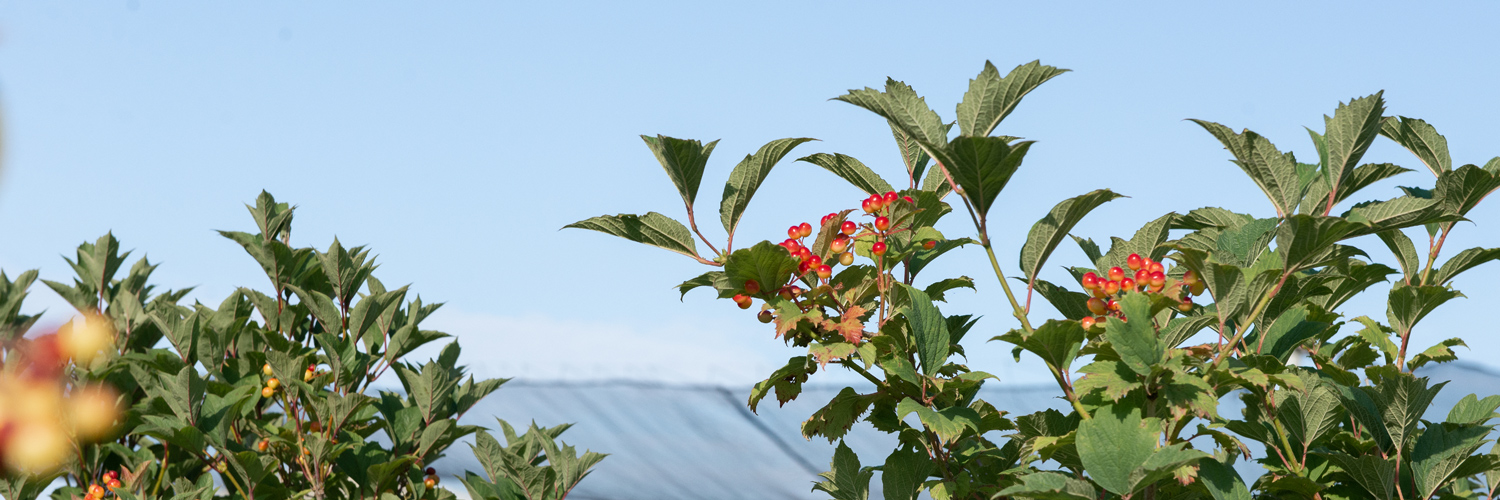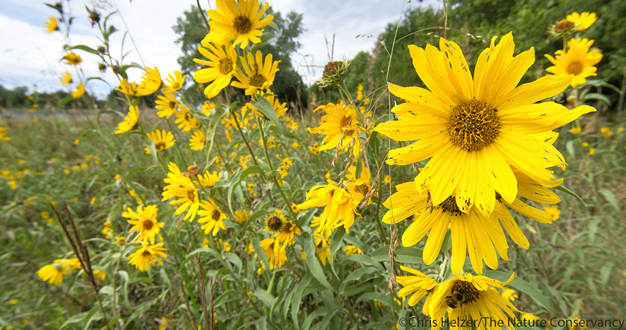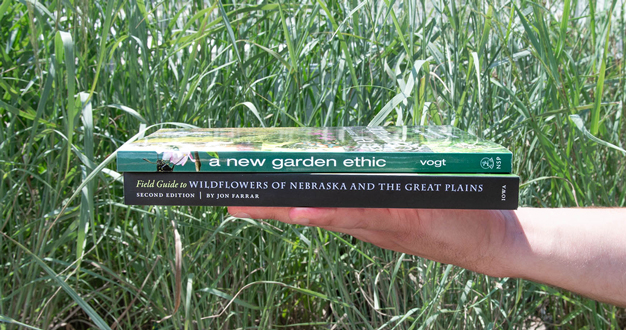
If you’re dreaming of a dense green planting for your landscape – maybe to enclose an outdoor space or create a screen between you and the neighbors – we recommend going with a mixed planting. A combination of shrubs and trees, both evergreen and deciduous, gives the space a natural look with other valuable benefits too. So when it comes to choosing deciduous shrubs, we often turn to the diverse world of viburnums. With a wide range of species and cultivars, they offer all kinds of interest for every season – texture, blooms, fruit, and fall color – and make the perfect choice for a mixed planting. Here, we take a closer look at what makes these beautiful shrubs such a valuable member of the landscape.
Beauty in Every Season
Viburnums always have something to delight you all year long. In spring, white or pinkish blooms appear in abundance. In the summer, dense green foliage provides a beautiful backdrop for all the textures and color in your landscape, and colorful berries provide welcome food for wildlife – in many cases, us too. When fall arrives, viburnums glow with rich shades of red, purple, orange, or yellow. And in the cold months, dense branching and persistent berries give structure and texture to a quiet landscape.
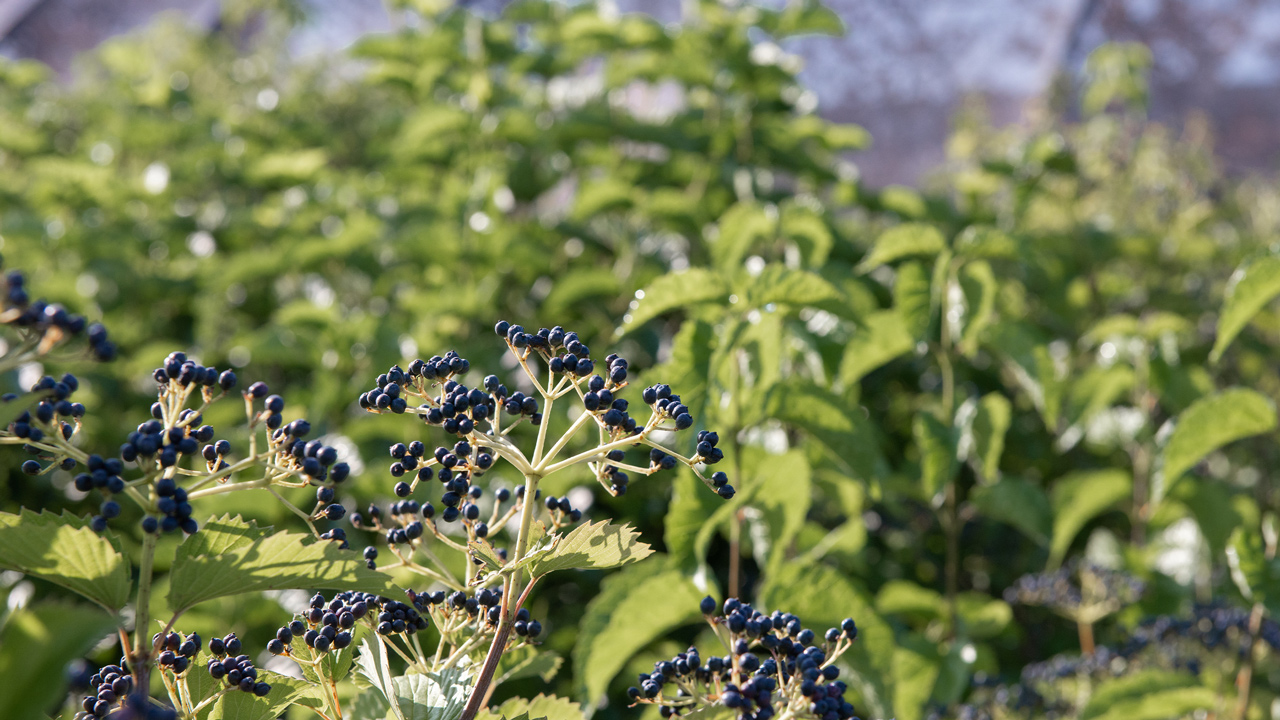
A Diverse Group
From a distance, viburnum varieties may appear very similar to each other. They’re mostly dense, upright, mounded shrubs with lots of leafy green foliage. And they’re all relatively big – reaching anywhere from five- to fifteen-feet-tall, depending on the species and cultivar. But take a closer look, and you’ll find a surprising variety of leaf styles, flowers, scents, and berries that make choosing a viburnum almost like hand-picking your own customized shrub.
Within the viburnum varieties, you’ll find foliage that’s pointed, rounded, or three-lobed like a maple leaf. You can choose from a list of textures that includes glossy, matte, downy, toothed, and ribbed leaves. In the fall, you’ll see solid colors in wine, burgundy, and purple. Or some species – like blackhaw viburnum – display a gorgeous mix of reds, oranges, and yellows on the same shrub.
The blooms show a wide range of options too. Some – like the popular Korean spicebush – fill the air with heady fragrance. Others are more subtle or have no scent at all. Depending on the species or cultivar, the clustered blooms may appear in flat, open umbels, while others form compact balls like a large-leaf hydrangea – European snowball bush is a good example. And one species – doublefile viburnum – arranges its blooms in a completely different way. Like the name implies, its flowers extend up and down the length of each horizontal, tiered branch in two opposite rows. After the blooms, come clusters of little round berries in a range of colors from pink to bright red, purple, or even jet black – sometimes in an impressive abundance.
So whatever combination of leaf, flower, scent, or berry you want for your landscape, we’ve probably got a viburnum for that.
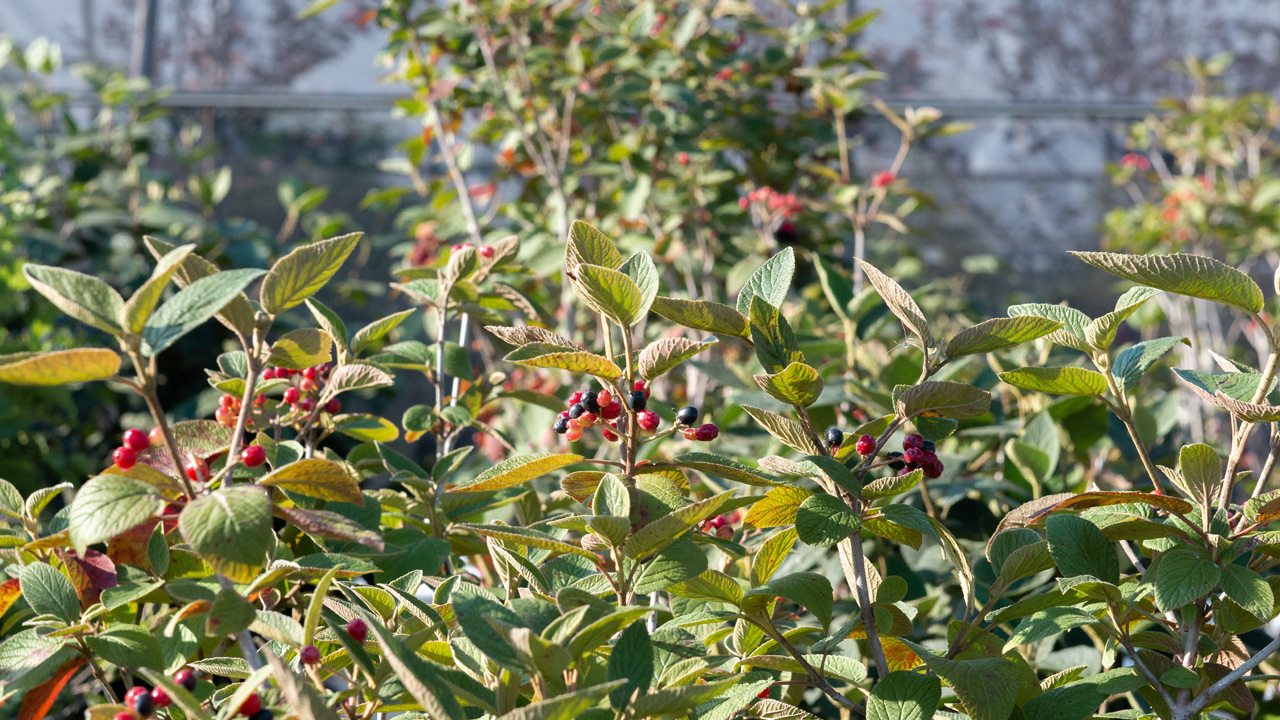
Versatile + Adaptable
Viburnums are not only a lovely addition to a landscape, they’re also versatile and easy to grow. Although some varieties only grow to six feet or so, most grow taller than that, making them an outstanding choice to create privacy or block unwanted views. Planted close together, viburnums can make a great hedge – a blooming one in the spring. Individually, a viburnum is an eye-catching backdrop in a perennial bed too.
Like most plants, viburnums have their preferences too. As a group, viburnums tend to appreciate full sun and well-draining, slightly acidic soil. But, also as a group, viburnums are adaptable plants and will continue to thrive in part-sun situations or where the soil isn’t exactly perfect. Doubfile and blakhaw viburnums are some of the more shade tolerant options.
A Community Supporter
With their blooms, berries, and dense branching, all viburnums offer resources for the local wildlife community, so if you’re interested in attracting wildlife to your landscape, any of the species and cultivars are good candidates. But some varieties of viburnum – arrowwood, blackhaw, and American cranberry bush, for example – are North American natives and are even better at providing nectar and shelter for native bees and butterflies than the Asian viburnum cultivars. Native viburnums are also a favorite for colorful native birds such as cedar waxwing, eastern bluebird, and northern cardinal.
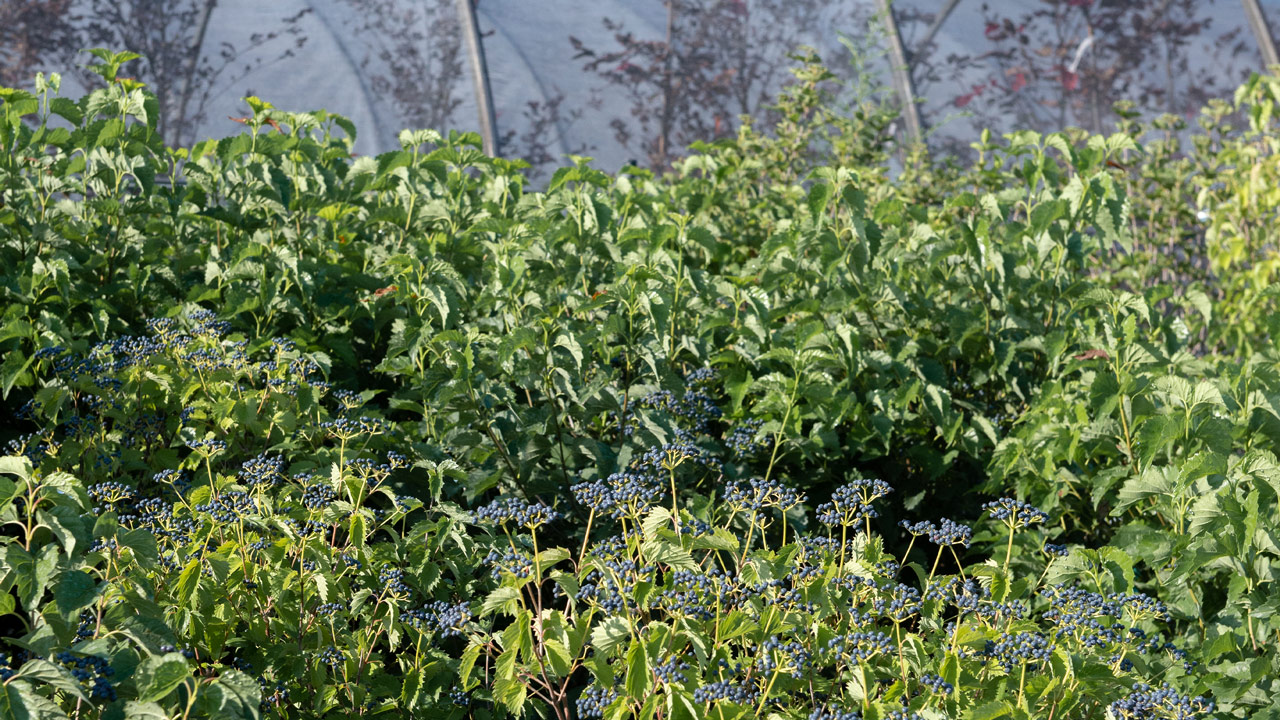
Find the Perfect One
To find the perfect viburnum for your space and goals – or to get more ideas for your mixed planting – stop in and talk with our team in the Nursery Yard. We’d be happy to show you around our viburnum collection and answer any questions you have.

